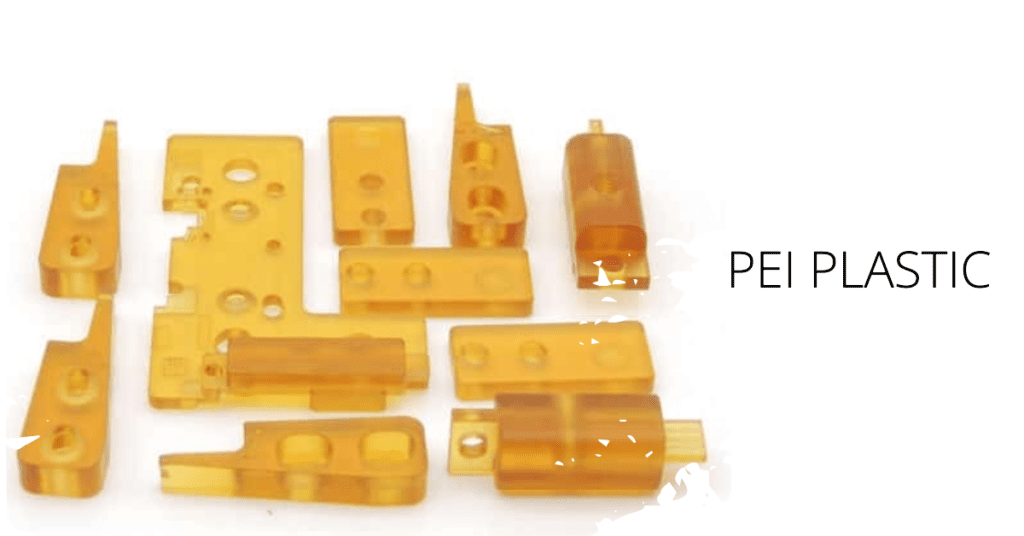
Polyetherimide, commonly known as PEI, has garnered considerable attention in various industries, notably for its unique set of mechanical, thermal, and electrical attributes. This high-performance polymer not only exhibits resilience in demanding environments but has evolved as an integral material in diverse applications ranging from aerospace to medical devices. Its prominence can be attributed to its amorphous nature, combined with superior structural integrity. As industries increasingly pivot towards materials that offer durability without compromising efficiency, PEI stands out as a frontrunner.
This exploration of PEI will shed light on its origin, properties, benefits, and its interplay with cutting-edge machining methods.
The Fundamentals: What is PEI Plastic?
At its core, PEI (Polyetherimide) is an amorphous thermoplastic derived from the polymerization of the monomer amic acid ( organic compound that has both a carboxylic acid and an amide functional group). Its translucent, amber-to-transparent appearance might deceive one into underestimating its capabilities. However, its molecular structure, comprising imide and ether linkages, grants it remarkable resilience and adaptability.
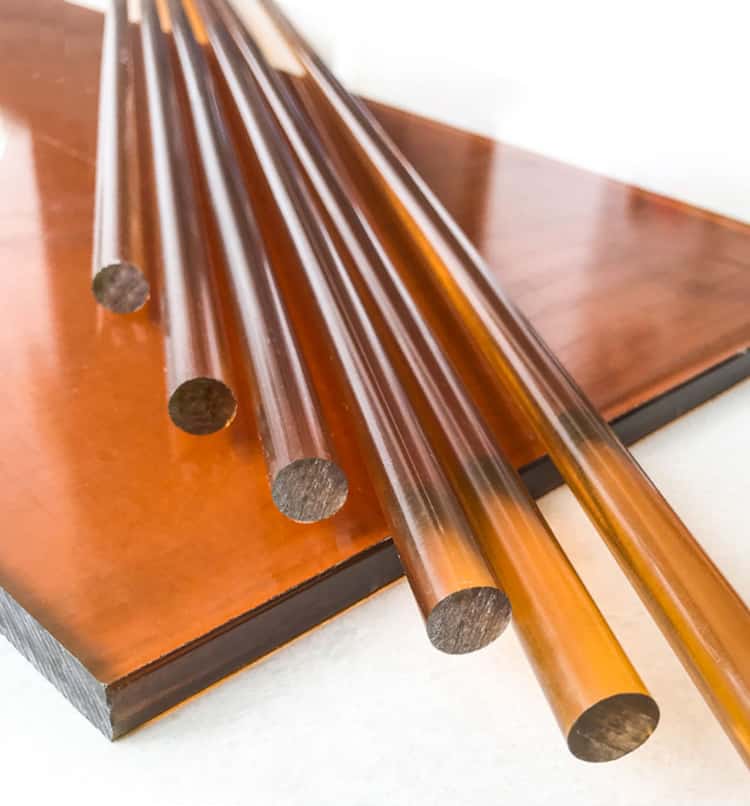
PEI plastic sheets and rods
PEI was developed in response to the growing demand for thermoplastics that could withstand higher temperatures while maintaining mechanical strength. It’s synthesized through a two-step process. First, a diamine reacts with a dianhydride to form an amic acid. This amic acid, upon high-temperature polymerization, gives rise to PEI.
1. Processing Methods of PEI
PEI can be processed using conventional methods tailored for thermoplastics. This includes injection molding, extrusion, and of course, CNC machining. Especially with precision CNC machining, intricate parts with tight tolerances can be crafted from PEI, making it even more versatile.
2. Industry Adaptation of PEI
The broad spectrum of PEI’s characteristics has led to its adoption across multiple industries. In the medical field, for instance, its biocompatibility means it’s a prime candidate for surgical tools and devices. In aerospace, its flame retardancy and weight-saving potential make it an indispensable component for interior panels, electrical housings, and more.
Key Features of PEI
Understanding the standout characteristics of PEI provides insights into why it’s the preferred choice in many demanding applications:
- High-Temperature Stability: Unlike other thermoplastics that might warp or deform, PEI retains its shape and structural integrity even under elevated temperatures.
- Mechanical Strength: PEI’s tensile strength and modulus are commendable, ensuring it doesn’t easily break or deform under pressure.
- Chemical Resistance: It’s resistant to a wide range of chemicals, making it suitable for environments where it might be exposed to corrosive agents.
- Flame Retardancy: PEI is inherently flame-resistant, which means it doesn’t readily support combustion. This property is especially vital in aerospace and automotive applications.
- Electrical Insulation: PEI boasts impressive electrical insulation capabilities, which is crucial for electronic components.
Table: Overview of PEI Properties
| Property | Value |
|---|---|
| Glass Transition Temperature | 217°C |
| Melting Temperature | 247°C |
| Tensile Strength | 85 MPa |
| Flexural Modulus | 3.1 GPa |
| Dielectric Strength | 14 kV/mm |
Properties that Set PEI Plastic Apart
Polyetherimide (PEI) has been highly valued in various industries primarily due to its unique combination of properties. These properties not only give PEI an edge over other thermoplastics but also make it suitable for demanding applications where other materials might falter.
1. High-Temperature Resistance
One of the standout properties of PEI is its ability to withstand elevated temperatures. Its impressive glass transition temperature of 217°C and melting temperature of 247°C mean it can maintain its structural integrity under conditions that would cause other plastics to warp, melt, or degrade.
This temperature resilience is due to its molecular structure, which provides stability even when exposed to prolonged high temperatures.
2. Exceptional Mechanical Strength
PEI’s mechanical prowess can be attributed to its high tensile strength and modulus. A tensile strength of around 85 MPa means that PEI can handle substantial amounts of stress before it begins to deform or break.
The polymer’s innate flexibility, combined with its strength, ensures it doesn’t shatter or fracture easily, even under high pressure or impact.
3. Superior Chemical Resistance
In many industrial applications, materials are often exposed to a variety of chemicals that can be corrosive or reactive. PEI’s chemical resistance is one of its marquee properties. It remains unaffected by a vast array of chemicals, including acids, bases, and organic solvents. This resilience ensures longevity even in chemically aggressive environments.
4. Inherent Flame Retardancy
Safety is paramount in many industries, especially in fields like aerospace and electronics. PEI’s natural flame resistance means it doesn’t support combustion readily. It not only resists ignition but also doesn’t emit toxic smoke when exposed to fire, making it a preferred choice in applications where flame safety is critical.
5. Impressive Electrical Insulation
Electrical properties often get overshadowed by mechanical ones, but in PEI’s case, its electrical insulation capabilities are worthy of note. With a dielectric strength of 14 kV/mm, PEI can effectively resist the flow of electric current, making it an ideal candidate for electronic components and insulators.
Table: Various properties of PEI plastics
| Property | Value |
|---|---|
| Density | 1.27 – 1.34 g/cm³ |
| Water Absorption (24h) | 0.25% |
| Tensile Strength | 80 – 85 MPa |
| Flexural Strength | 110 – 130 MPa |
| Elongation at Break | 50 – 60% |
| Hardness (Rockwell M) | 99 |
| Chemical Resistance (Acid) | Good |
| Chemical Resistance (Base) | Good |
| Dielectric Constant (1kHz) | 3.15 |
| Dielectric Strength | 14 – 16 kV/mm |
| Melting Point | 217°C |
| Glass Transition Temperature | 217 – 218°C |
| Coefficient of Thermal Expansion | 55 x 10^(-6) /°C |
| Flammability | V-0 (UL94 rating) |
| UV Resistance | Poor |
| Transparency | Semi-transparent to Opaque |
(Note: These values are approximate and subject to change based on the grade of PEI and processing conditions. Refer to material datasheets or manufacturers for definitive data.)
What Are the Common Applications of PEI Plastic?
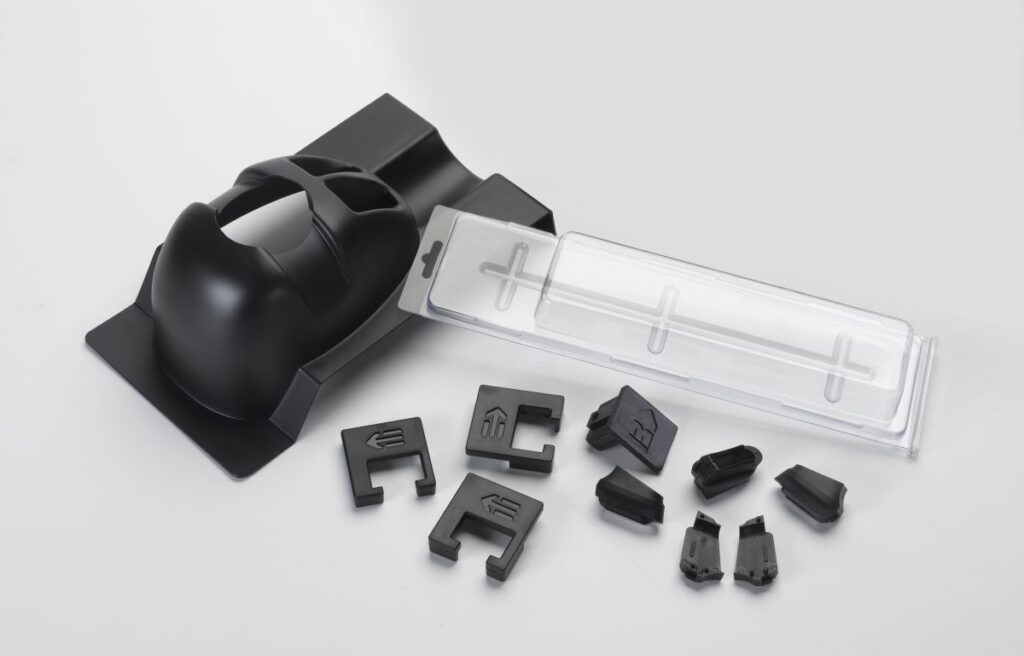
Custom PEI plastic parts
PEI’s distinctive properties, as highlighted above, make it the material of choice for a myriad of applications spanning across industries. Its adaptability and resilience are testament to its versatility.
1. Aerospace Components
Given its lightweight nature combined with high-temperature resistance and flame retardancy, PEI is heavily favored in the aerospace sector. It’s commonly used in components like interior panels, cable insulations, and electrical housings. Its ability to meet the strict safety regulations of the aerospace industry cements its position in this domain.
2. Medical Devices and Tools
Biocompatibility is a vital property for any material used in the medical field. PEI meets this criterion and is thus employed in surgical tools, medical devices, and even in some implantable devices. Its resistance to sterilization processes ensures longevity and safety.
3. Electronic Components
PEI’s electrical insulation capabilities are put to good use in the electronics industry. From connectors, sockets to PCB components, PEI ensures safety, reliability, and performance. Additionally, its high-temperature resistance makes it suitable for components close to heat sources.
4. Automotive Parts
The automotive industry continually seeks materials that enhance performance without adding weight. PEI, with its strength-to-weight ratio and high-temperature resilience, is ideal for under-the-hood components, electrical systems, and interior elements that require a balance of aesthetics and functionality.
5. Industrial Equipment
The durability and chemical resistance of PEI makes it a prime candidate for various industrial equipment. Whether it’s in chemical processing units, oil and gas components, or even in manufacturing machinery, PEI stands up to the rigors of industrial use.
6. Consumer Goods
The aesthetic appeal of PEI, combined with its strength, has also found its way into consumer goods. Items like eyeglass frames, kitchenware, and even some high-end gadgets benefit from the sleek finish and durability PEI provides.
PEI Plastic Machining
Machining PEI plastic requires precision, the right equipment, and expertise to ensure that the final product retains all the advantages that PEI inherently offers.
PEI’s molecular structure, combined with its mechanical and thermal properties, presents both opportunities and challenges when it comes to machining. PEI’s high glass transition temperature means that it can maintain its form during machining without warping or melting. However, its strength can pose challenges, necessitating the use of sharp tools and precise techniques.
- Machining Techniques: Standard machining processes suitable for plastics, like milling, drilling, and turning, are generally applicable to PEI. The technique chosen often depends on the intricacies of the part being produced and the required finish.
- Tool Selection: Due to PEI’s strength and abrasiveness, carbide tools are often recommended over high-speed steel. Sharp, well-maintained tools ensure a smoother finish and reduce the chances of chipping or cracking.
- Coolants: While PEI’s high-temperature resistance reduces the need for aggressive cooling, light coolants can still be beneficial, primarily to flush away chips and prevent any localized overheating.
Tolerances and Precision in PEI Plastic Machining
PEI’s reputation for precision components stems from its ability to be machined to tight tolerances. Given the right setup, machining PEI can achieve tolerances as tight as ±0.005 inches or even tighter for specialized applications.
Precision is ensured by a combination of tool selection, machine calibration, and the experience of the operator. The stability of the machining setup, from the fixtures to the machine’s overall condition, plays a significant role in achieving consistent results.
To ensure that the tight tolerances are consistently met, it’s crucial to incorporate regular measurements and quality checks throughout the machining process. Techniques such as coordinate measuring machine (CMM) inspections can provide high levels of accuracy.
Challenges and Solutions in PEI Machining
Machining PEI is not without its challenges. While the plastic’s properties provide certain advantages, they also bring about some considerations that need to be addressed to ensure optimal outcomes.
Table: Challenges and Solutions in PEI Machining
| Challenges | Solutions |
|---|---|
| Overheating during prolonged machining sessions | Employ mild coolants and take periodic breaks to ensure localized temperatures remain in check. |
| Tool wear due to continuous machining | Use carbide tools for their durability and hardness; regularly inspect and replace worn tools. |
| Vibration leading to imperfect finishes | Implement dampening systems and adjust feed rates and speeds to minimize vibrations. |
| PEI grade variations causing inconsistent results | Prioritize understanding the specific PEI grade being used and adjust machining parameters accordingly. |
| Ambient moisture affecting PEI’s properties | Control the machining environment’s humidity; store PEI in controlled conditions prior to machining. |
| Inaccuracies due to machine calibration issues | Ensure regular calibration of the CNC machine to minimize deviations and errors. |
| Difficulty in achieving high precision tolerances | Employ advanced inspection tools, like Coordinate Measuring Machines (CMM), for precise measurements and feedback. |
Post-Machining Processes
After completing primary machining, several post-processing techniques can be used to improve a part’s properties or aesthetics. Surface finishing methods, such as polishing, can produce a high-gloss finish on PEI parts. Other finishes can also be applied based on the specific application’s requirements.
As mentioned previously, annealing can relieve internal stresses, ensuring that the PEI component maintains its shape and dimensions over time. For components that are part of a larger assembly, processes like ultrasonic welding or the use of adhesives can be employed to join PEI parts together or with other materials.
PEI Plastic Machining: Step-by-Step
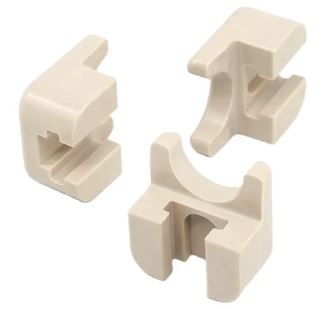
CNC machined parts of PEI plastic
PEI (Polyetherimide) plastic stands as a titan among engineering thermoplastics, boasting a balance of mechanical robustness and mold-ability. When undertaking the task of machining this high-performance plastic, a meticulous step-by-step approach is crucial to ensure precision and quality. Moreover, several factors can influence the outcome, so awareness and anticipation are vital throughout the process.
Step 1: Designing and Blueprint Creation Before actual machining starts, having a comprehensive blueprint is imperative. The design dictates the dimensions, tolerances, and finish of the component.
Leveraging Computer-Aided Design (CAD) software helps in creating intricate designs that are then fed to the machining equipment using Computer-Aided Manufacturing (CAM) systems.
Step 2: Material Selection Given the variations in PEI grades, selecting the right one to match the intended application’s requirements is crucial. Some grades might contain glass fibers for added strength, while others are formulated for enhanced UV resistance or electrical properties.
Step3: Machine Setup
Ensuring that the CNC machine is calibrated correctly, along with the right selection of tools, lays the groundwork for a successful machining process.
- Tool Selection: Carbide tools, given their hardness and durability, are preferred for PEI machining.
- Machine Calibration: Periodic calibration ensures that deviations, errors, and inaccuracies are minimized.
Step4: Machining Process
During machining of PEI plastic, the machine undertakes various processes such as milling, drilling, or turning. Adjusting the feed rate and speed helps ensure minimal tool wear and prevents localized overheating or melting of the plastic. While PEI’s high thermal stability reduces aggressive cooling needs, mild coolants can help in chip removal and tool lubrication.
Step 5: Post-machining Processes After primary machining, further processes refine the component’s aesthetics and properties. Annealing is a heat treatment that can alleviate internal stresses induced during machining, while surface finishing techniques such as polishing can be used to enhance the visual appeal and surface smoothness.
Step 6: Quality Inspection and Assurance Ensuring that the finished product meets the specifications is of paramount importance.
Devices like the Coordinate Measuring Machine (CMM) offer high precision in assessing the component’s dimensions. To check for surface irregularities, imperfections, or blemishes, visual inspection can be done.
What Are the Factors to Consider When Machining PEI?
Factors to consider when machining PEI include material grade and variations, tool condition and selection, machining speeds and feeds, temperature management, environmental conditions, and end-use application.
- Material Grade and Variations: As mentioned, PEI comes in different grades, and each might react differently under machining. For example, glass-filled or UV-resistant variants might require slight adjustments in the machining parameters.
- Tool Condition and Selection: The condition of the machining tool directly impacts the quality of the final product. Ensuring that tools are sharp and free from wear or damage can reduce issues like chipping or poor surface finish.
- 3Machining Speeds and Feeds: Too aggressive or too conservative parameters can lead to problems. Based on the machine, tool, and PEI variant, finding the right balance in terms of speed and feed rate is crucial for efficient and precise machining.
- Temperature Management: Even with PEI’s impressive thermal resistance, temperature control remains a concern. While aggressive cooling might not be necessary, periodic breaks and mild coolants can ensure that localized temperatures remain in check.
- Environmental Conditions: The ambient conditions in the machining environment can influence the process. Excessive ambient moisture can affect PEI’s properties, while ambient temperature can influence the machine’s performance and the cooling rate of the component.
- End-use Application: The intended use of the PEI component will guide many of the decisions during the machining process. A component meant for aerospace might have different requirements than one intended for consumer electronics in terms of precision and surface finish.
Prolean’s Plastic CNC Machining Services: A Cut Above the Rest
In the vast expanse of CNC machining service providers, Prolean stands as a beacon of excellence, particularly when it comes to plastic CNC machining. Delving deeper into the reasons behind this industry acknowledgment reveals a blend of technology, expertise, and commitment to client satisfaction.
Mastery over Material Complexity
Plastic, in contrast to metals, often demands a distinct approach due to its unique material properties. Our team has the comprehensive knowledge required to understand the subtleties of various plastics, including PEI. This ensures that regardless of the plastic being machined, the output remains consistent and of the highest quality.
State-of-the-Art Equipment
A significant part of our success can be attributed to their investment in cutting-edge machinery. These machines, when combined with skilled operators, ensure that complex designs are executed flawlessly, meeting the stringent tolerances demanded by industries.
Quality Assurance Protocols
Quality isn’t a mere checkbox for Prolean; it’s a commitment. From the moment raw materials arrive to the time a finished product is dispatched, it undergoes rigorous checks. These measures ensure that clients receive parts that meet, and often exceed, their expectations.
Tailored Solutions for Diverse Needs
Prolean recognizes the distinct requirements of different sectors. Whether it’s aerospace, electronics, or automotive, we offer bespoke solutions. Our dedicated R&D team continually innovates, ensuring that client-specific needs are always met with precision.
Round-the-Clock Support
Understanding that challenges don’t operate on a 9-to-5 schedule, We offer unwavering support. Our expert team is always ready to assist, ensuring that projects remain on track and any issues are addressed promptly.
Conclusion
Polyetherimide (PEI) plastic is emerging as a prominent force within the material world, boasting an impressive array of attributes tailor-made for modern requirements. As the industry trends gravitate towards materials that offer resilience without compromising on weight or environmental sustainability, PEI is well-positioned to fill this niche. CNC machining amplifies the capabilities of PEI, unlocking intricate designs and exceptional precision that manual operations might find challenging to achieve. With the inexorable march of industries towards enhanced efficiency, sustainability, and durability, the adoption of high-performance polymers like PEI becomes not just beneficial but imperative.
It is here that experts like Prolean come into the picture. By merging advanced CNC techniques with comprehensive material knowledge, they bridge the gap between potential and reality, enabling industries to harness the full prowess of PEI.
FAQs
What is PEI plastic known for?
PEI plastic is renowned for its high strength-to-weight ratio, temperature resistance, and excellent electrical and fire-resistant properties, making it suitable for a multitude of applications.
Why is CNC machining preferred for PEI?
CNC machining offers unparalleled precision, which is essential to tap into the full potential of PEI. Automated processes ensure consistent quality and intricate designs that might be challenging with manual techniques.
Are there any environmental advantages to using PEI?
Yes, PEI is recyclable, which means that products made from it can be repurposed at the end of their lifecycle, contributing to a circular economy and reduced environmental impact.
Is PEI suitable for high-temperature applications?
Absolutely. One of PEI’s standout features is its ability to retain its properties even at elevated temperatures, making it perfect for sectors where temperature resilience is crucial.
How does PEI compare to other plastics in terms of cost?
While PEI might be more expensive than some standard plastics, its superior properties often result in long-term cost savings due to its durability, reduced maintenance, and longevity.
How does Prolean enhance the capabilities of PEI plastic?
Prolean, with its state-of-the-art CNC machinery and expert team, ensures that PEI is machined with utmost precision. Our rigorous quality checks and client-centric approach guarantee optimal utilization of PEI’s properties

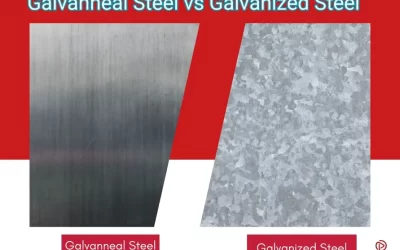
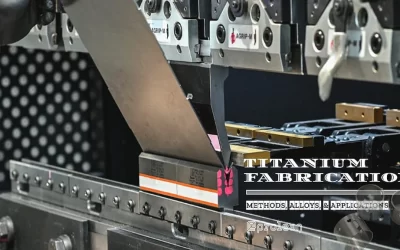
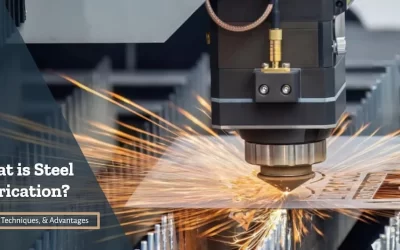
0 Comments